- Home
- Rod and Reel Combos
Saltwater Fishing Rods and Reels Must Be Properly Matched
Whilst saltwater fishing rods and reels must be individually of good quality, it's vital that they are properly matched if you're to get the best out of them for a particular fishing technique.
Put another way, a top class saltwater fishing reel fitted to top class saltwater fishing rod doesn't make it a top class outfit.
Some tackle suppliers match suitable fishing rods and reels together and market them as combos, often selling them at a lower price than the combined total of the two items.
It's worth looking at what's on offer, and if one such combo meets your requirements you may get great value for money.
Before we get to look at fishing rods and reels that do go together to make well matched outfits, we'll narrow it down a bit and look at those that don't go together...
On this page...
Matched outfits for:~
Fishing Rods and Reels that Don't Go Together
There are some fishing rods that multiplier reels (baitcaster reels) shouldn't be used with. The problem arises because a multiplier is used on top of the rod - not below it like a spinning reel.
When the line is pulled tight it takes up a series of straight lines between successive pairs of line guides. This doesn't create a problem with the rod below the reel, as the line is pulled clear of the rod.
But with the rod the other way up, as it is with a multiplier, the line is pulled down onto the rod, creating significant friction which will:~
- reduce your casting distance
- lead to over-runs and birdnests
- weaken your line
- damage the protective coating on the rod
None of which is good news. Of course, quality fishing rod manufacturers are aware of this and usually state on the rod whether it's designed for a multiplier or a fixed spool reel. A fishing rod intended for use with a multiplier will have the line guides positioned closer together where they'll keep the line clear of the rod at all times.
Rods designed for use with a fixed spool reel will have fewer line guides, the lower ones of which will be of larger diameter to accommodate the coils of line as they flow off the spool.
OK, you can use a fixed spool on a rod intended for a multiplier, although your casting distance will be considerably reduced - but you should definitely avoid using a multiplier on a rod intended for a fixed spool reel.
Check out this selection of good-value Rod & Reel Combos for all types of saltwater fishing!
Matched Shore Fishing Rods and Reels
One general proviso here for properly matching shore fishing rods and reels, and that's relating to the use of braid lines...
All types of shore fishing require casting, for which modern braid lines are well suited. But these lines don't work well with small multiplier reels, the reason being that their small diameter causes them to bind between adjacent coils on the reel spool, which can lead to over-runs and birdnests.
This doesn't happen with fixed spool (spinning) reels, as the larger spool and the line lay mechanism practically eliminates line binding. So it's nylon monofilament line for baitcaster reels, and braid - or nylon monofilament line - for spinning reels.
Surfcasting Outfits
Surfcasting is often, but not always, about heaving a bait out a very long way. And distance is easier to achieve with a long rod than a shorter one. So for maximum distance go for a rod of 15ft to 16ft, and a fixed spool reel loaded with braided line and a low-stretch mono leader.
But of course there's rather more to it than that, so please click here to find out more about modern surf fishing rods and reels.
Long surfcasting rods of the type described above will have a fairly soft action to compensate for the non-stretch nature of braid lines, which will make them quite unsuitable for bullying a fish out of rough ground. For that a shorter, stiffer rod will be better - around 12ft or so, and rated for casting 6oz to 8oz leads. The reel can be either a fixed spool or a multiplier loaded with more stretchy nylon monofilament line.
Pier, or Jetty Fishing Outfits
The very nature of pier fishing means that you have to winch your catch vertically up from the sea, which requires a powerful rod and reel. My preference is for the 12ft surfcaster outfit described above - or a purposely designed pier rod - coupled with a multiplier reel.
Why a multiplier? Well, when you do need the reel to act as a powerful winch, the multiplier beats the fixed spool reel every time. Not only are fixed spool reels generally higher geared, in this application the efficiency loss resulting from turning the line through 90 degrees at the fixed spool reel's bale arm roller is significant.
However, check out any pier or jetty and nine out of ten anglers will be using a fixed spool reel. This is more to do with cost than benefit, a fixed spool reel being considerably cheaper than a multiplier of similar capacity.
Baitcasting and Spinning Outfits
Whether it's classed as a baitcasting or a spinning outfit depends on the choice of reel. Baitcaster (or multiplier) reels are used on top of the rod, whilst spinning (or fixed-spool) reels are slung below it.
The lightest saltwater baitcasting outfits comprise a one-handed trigger grip rod and a baitcaster reel, and they're a delight to use with all small lures.
But a heavier two-handed outfit will be much more versatile. My choice of spinning outfit is an 11ft rod rated for casting lures up to 3oz/90gr coupled with a fixed spool reel loaded with 10lb to 15lb line.
This outfit is also fine for float fishing for harbour mullet, or casting a heavier sliding float rig from the breakwater for bass and mackerel, and can also be used for short range beachcasting and estuary fishing.
Matched Boat Fishing Rods and Reels
Another general proviso here, this time for properly matching boat fishing rods and reels. If the rod is fitted a roller tip guide, it's designed for a multiplier reel and must be used 'upside down'. If you try and use it with a fixed spool reel, the line won't be in contact with the roller and will soon chafe and break as a result.
Jigging Outfits
Not too long ago boat anglers used a general purpose boat rod for jigging, but the advent of braid lines changed that.
These small-diameter non-stretch lines are ideal for jigging as they transfer all of the movement applied by the angler directly to the lure, instead of having it damped out through line stretch.
As you'll be working the rod all the time, you won't want a heavy one. A fast-action, carbon jigging rod is what you need. Some anglers always use a fixed spool reel, on account of its fast drop, but I'm happier with a multiplier for jigging.
Uptiding Outfits
Uptide rods are much like a mini version of a beachcaster, and are designed for casting lead weights within ranges between 4oz and 10oz.
In the UK we tend to use multipliers for uptiding, so most uptide rods are optimised with small, closely spaced line guides. But as we've mentioned earlier, multipliers are not best suited for casting today's very thin braid lines, as the coils bind into each other on the narrow diameter spool.
Fixed spool reels with their larger diameter spools don't share this problem, so there's much to be said for using a fixed spool reel loaded with braid for uptiding - providing of course you can find a suitable rod for it.
General Downtide Boat Fishing Outfits
General purpose boat rods aren't designed for casting, so there's no benefit in using a fixed spool reel. These rod types usually have a line class rating of between 20lb and 60lb, and are best matched with an appropriately sized multiplier reel, probably a 4/0 but not more than a 6/0.
Trolling Outfits
Matching fishing rods and reels for trolling is simple if you follow the IGFA line class system.
For example a 20lb class rod is ideally matched to a size 20 reel, and a 50lb class rod with a size 50 reel and so on. The reasoning behind this sizing system is that if your target gamefish species justifies the use of a 30lb rod for example, then a size 30 reel will have the capacity for enough 30lb class line to play it out.
But that was based on nylon monofilament. With today's braid lines, it's usually possible to drop down a reel size and use a 30lb class rod with 30lb braid line on a fully loaded size 20 reel.
Recent Articles
-
Sea Fishing Rods and Reels Must Be Compatible for a Balanced Outfit
Mar 08, 21 08:30 AM
A quality reel fitted to a quality rod doesn't necessarily make it a quality outfit. Your fishing rods and reels have to be properly matched if you're to get the best out of them, and here’s how -
Essential Lure Fishing Tips That All Saltwater Anglers Should Know
Mar 08, 21 04:51 AM
Which single lure fishing tip applies to trolling, jigging, baitcasting, spinning, fly fishing and any other branch of lure fishing? Well, it is the one at the top of this list -
Vital Jig Fishing Tips That You Really Cannot Afford To Miss!
Mar 07, 21 10:20 AM
Essential jig fishing tips to help you select the right lure for successful jig fishing, together with the techniques required to get the most out of your jig fishing outfit
















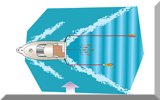

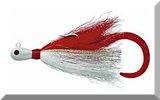
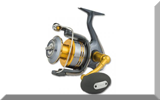
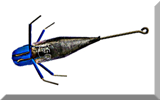
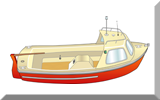
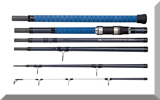
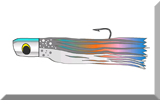
New! Comments
Have your say about what you've just read! Leave me a comment in the box below.